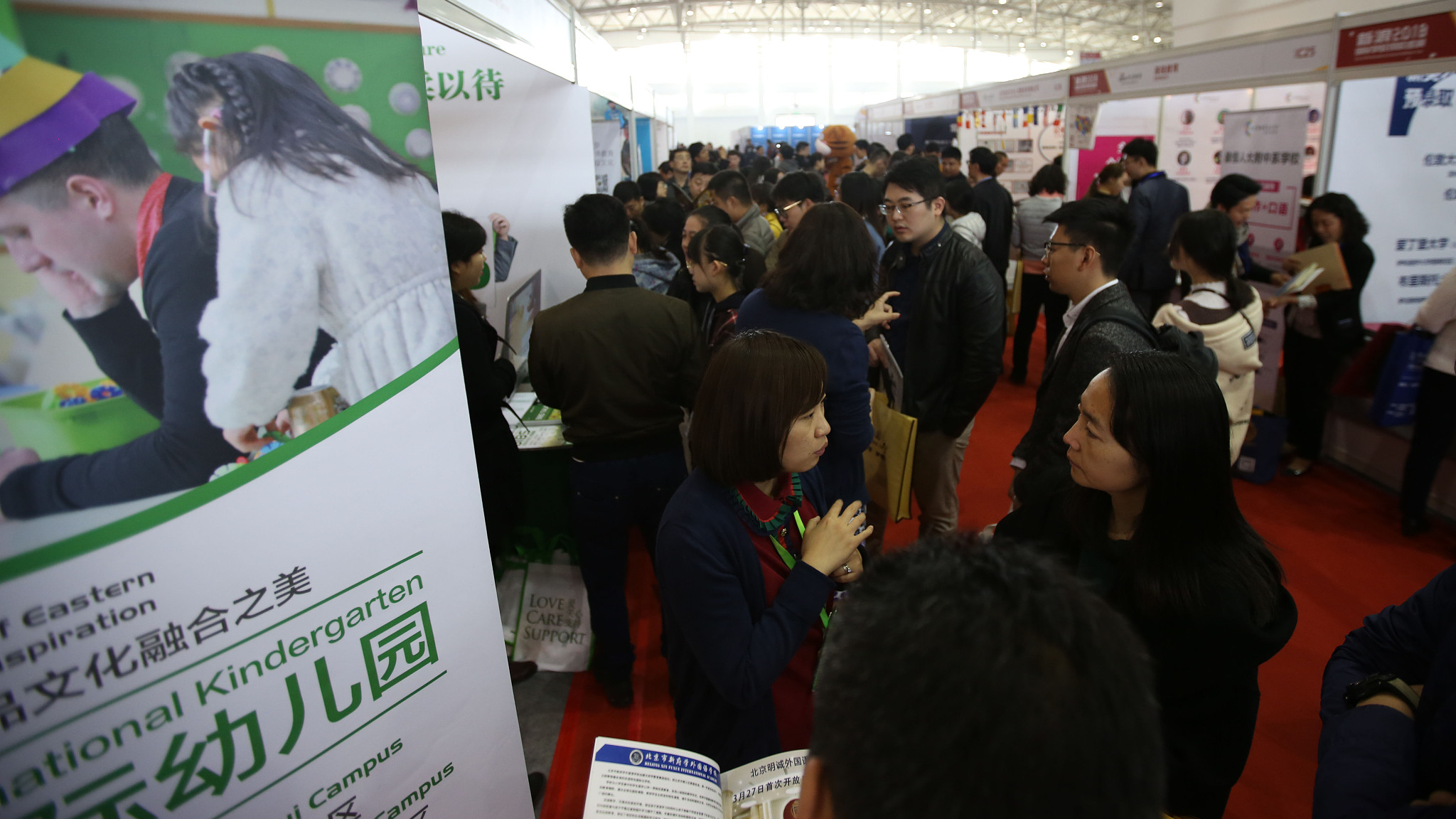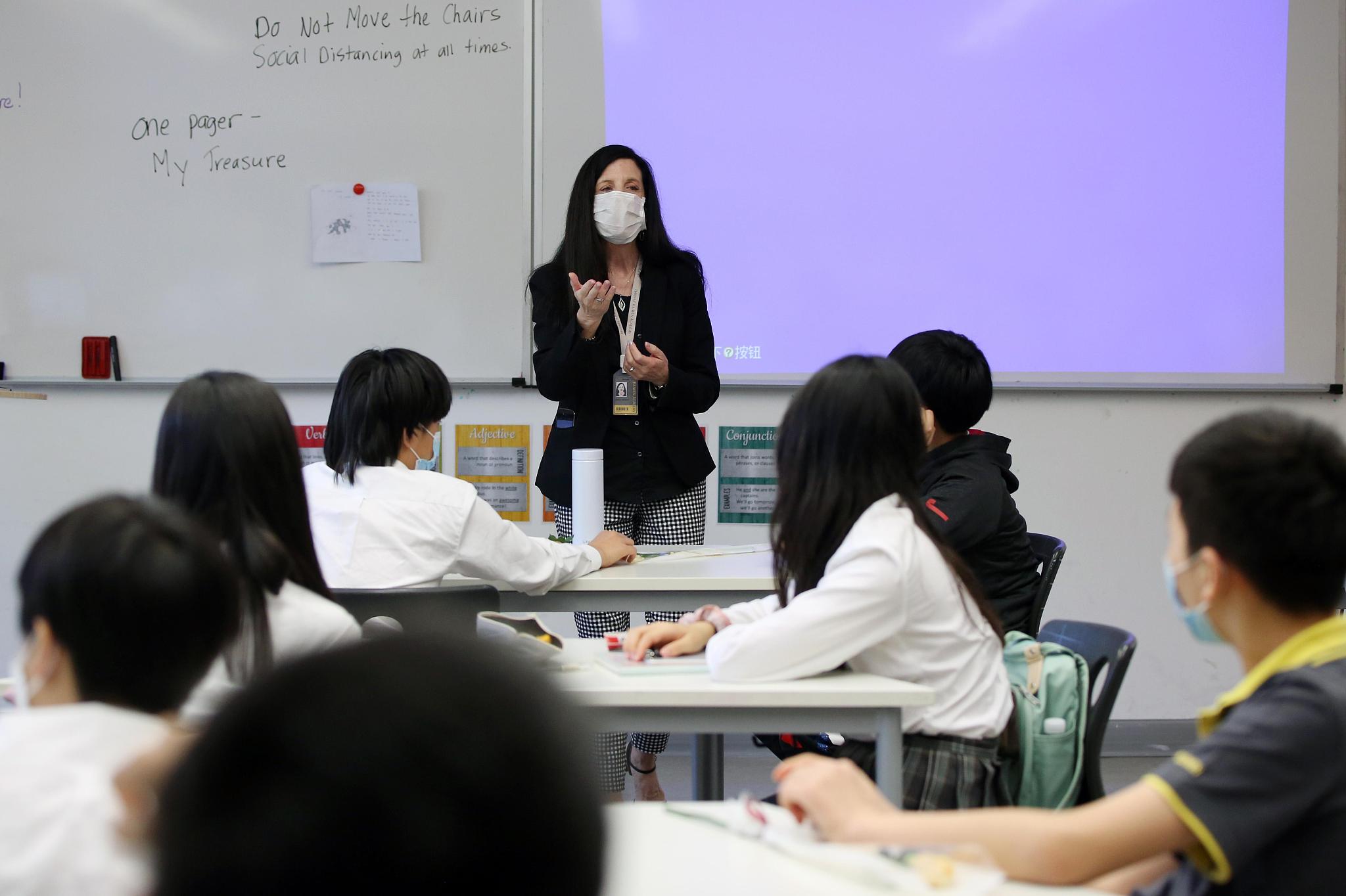
The 23rd China International Education Exhibition opens at the National Agricultural Exhibition Center, Beijing, March 24, 2018. /VCG
The 23rd China International Education Exhibition opens at the National Agricultural Exhibition Center, Beijing, March 24, 2018. /VCG
Editor's note: Wang Yan is an Associate Research Fellow at China's National Institute of Education Sciences. The article reflects the author's views, and not necessarily those of CGTN.
2020 marks the end year of China's 13th Five-Year Plan (FYP). Despite the lockdown, momentum has been maintained for China to keep opening up its education sector. Data has shown that China's international exchange and cooperation in education have been consistently improving in all respects over the past five years.
International students, joint institutions and programs as well as mutual recognition of qualifications and degrees are generally benchmarks for achievements of international exchange and cooperation in education. Evidently China has broken the record in all these areas during the implementation of its FYP.
In the past five years, another 580 joint institutions and programs have been established upon approval by authorities, including 356 above bachelor level. This elevated China's total number of joint institutions and programs to 2,332 by the end of 2020, among which 1,230 are above bachelor level.
From 2016 to 2019, nearly 2.5 million Chinese students were enrolled in tertiary education worldwide, among whom approximately 2 million returned home upon completion of their study, accounting for 79.7 percent of the total.
As the Chinese government has continued to advance educational cooperation in Belt and Road countries, from 2016 to 2020, 11 agreements on mutual recognition of qualifications and degrees were signed, covering 54 countries and regions.
Compared with 12th FYP, the Chinese government prioritized quality and efficiency in its policy design and implementation to open up its education sector during its 13th FYP period.
In terms of international students, stricter control was imposed on admission qualifications. Quality monitoring and evaluation systems were also improved. The year 2019 saw an increase of 7 percent of international students who studied for degrees (versus certificates) in China compared to 2016.
To facilitate the settling and employment of returning tertiary graduates, the government has simplified certain procedures, such as canceling the certification of overseas qualifications and offering more customized services.
The procedure for authorizing joint institutions and programs has been decentralized, as five provinces, including Hainan, Fujian, Guangdong, Zhejiang and Henan, as well as Chongqing Municipality have obtained discretion for approval of joint programs in their top-performing universities.

A resumed class after COVID-19 epidemic, June 1, 2020. /VCG
A resumed class after COVID-19 epidemic, June 1, 2020. /VCG
Furthermore, multilateral cooperation has been scaled up for contributing to global governance. China continues to work with multilateral organizations such as UNESCO, UNICEF, G20, and APEC. As it draws upon best practices from the international community, more than ever, it shares its lessons and experiences with the world, particularly with developing countries, through training programs in polytechnic universities for countries in East Africa in cooperation with the World Bank among other projects.
The COVID-19 pandemic has disrupted physical exchanges and cooperation in cross-border education, yet the momentum of opening-up has not waned. China is striving to go global in the education sector in alternative ways. As it proves, global cooperation is key to overcoming challenges in the year of lockdown and also in recovery and development in the post-COVID-19 era.
Under the pandemic, the Chinese government remains committed to opening up its education sector. This is evidenced by a guideline jointly issued by China's Ministry of Education and seven other departments in June 2020.
The guideline recognizes the significant role the opening-up measures in the education sector play in promoting educational development.
In the same vein, an array of policies have been issued on education opening up in Hainan Province as well as the Guangdong, Hong Kong and Macao Greater Bay Area, leveraging the strengths and opportunities of the free trade ports for joint institutions and programs.
As specified in the guideline, China will develop more favorable policies for joint institutions and programs, diversify education delivery modality, creating incentives, and developing new policies to expand a great variety of education access with quality and efficiency.
The lessons for cross-border education gained during the COVID-19 pandemic will be institutionalized and normalized to facilitate education continues to go global.
All these, hopefully, will contribute to a community of a shared future for mankind.
(If you want to contribute and have specific expertise, please contact us at opinions@cgtn.com.)

